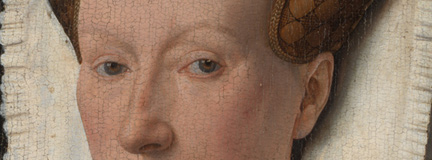
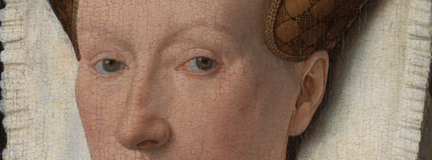
Following cleaning, the small losses and areas of damage needed to be retouched so that they do not distract from the compelling image and Van Eyck’s immaculate painting technique.
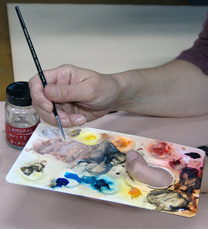
The small size and refinement of the painting meant that the retouching had to be very precise. It was mostly carried out under the magnification of a microscope. The smallest size of brush was used to apply the retouching paints, especially manufactured for restorers.1
The materials used for the new restoration had to be stable, not changing colour like the old varnish and retouchings, and remain easily resoluble so that the painting can be safely cleaned again in the future. Carefully selected and tested modern synthetic resin paints were therefore employed.
Damaged areas
The most damaged part of the painting was the black background, especially in the area above Margaret’s head. By eliminating these losses, the velvety depth of the black is recovered and the astonishing painting of the edges of the white headdress can be appreciated without interruption.
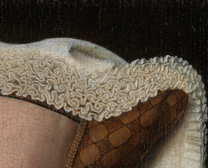
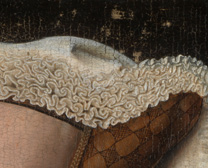
The network of cracks which has developed with time in the ground and paint layers is a distinctive feature of the painting. A similar craquelure can be seen on some other works by Van Eyck, including A Portrait of a Man (Self Portrait?), 1433.
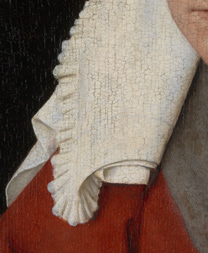
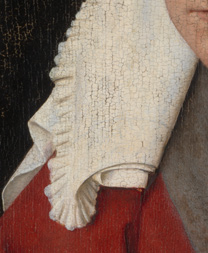
In some areas, however, the cracks have become widened by small flake losses from their edges and corners. The effect was to disrupt the subtleties of modelling in the white headdress and in a few places on Margaret’s face and neck. These minute losses were retouched, taking great care not to eliminate the cracks completely as they are intrinsic to a painting of this age.
